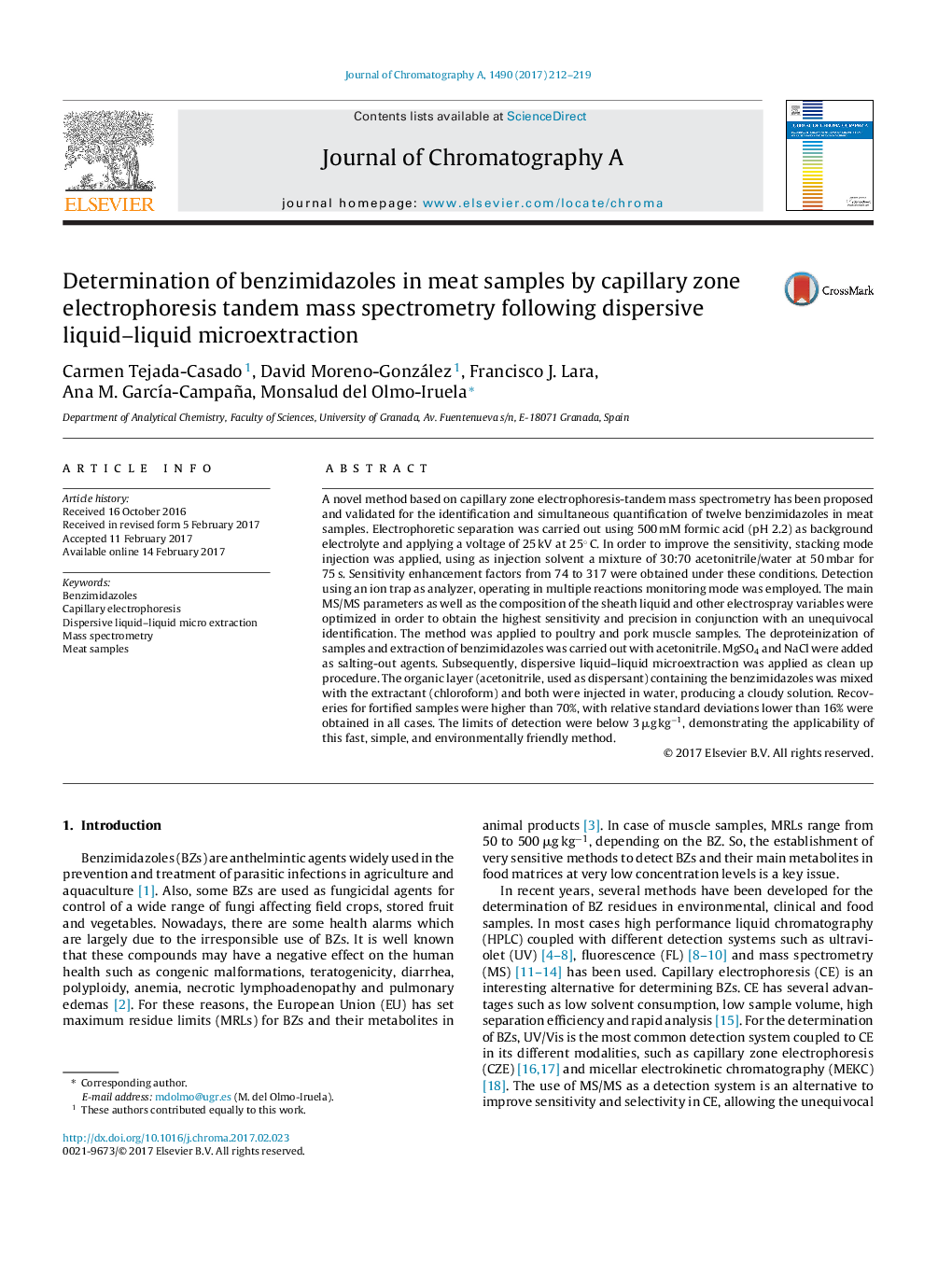| کد مقاله | کد نشریه | سال انتشار | مقاله انگلیسی | نسخه تمام متن |
|---|---|---|---|---|
| 5135696 | 1493436 | 2017 | 8 صفحه PDF | دانلود رایگان |

- A CZE-MS/MS method is developed to determinate 12 benzimidazoles in meat samples.
- DLLME has been proposed for sample clean up after an extraction with MeCN.
- DLLME-CZE allows for a fast, low cost methodology with low environmental impact.
- CZE-MS/MS with online stacking preconcentration permitted an enhancememt of sensitivity.
- LOQs are lower than their MRLs, complying with the current legislation.
A novel method based on capillary zone electrophoresis-tandem mass spectrometry has been proposed and validated for the identification and simultaneous quantification of twelve benzimidazoles in meat samples. Electrophoretic separation was carried out using 500 mM formic acid (pH 2.2) as background electrolyte and applying a voltage of 25 kV at 25° C. In order to improve the sensitivity, stacking mode injection was applied, using as injection solvent a mixture of 30:70 acetonitrile/water at 50 mbar for 75 s. Sensitivity enhancement factors from 74 to 317 were obtained under these conditions. Detection using an ion trap as analyzer, operating in multiple reactions monitoring mode was employed. The main MS/MS parameters as well as the composition of the sheath liquid and other electrospray variables were optimized in order to obtain the highest sensitivity and precision in conjunction with an unequivocal identification. The method was applied to poultry and pork muscle samples. The deproteinization of samples and extraction of benzimidazoles was carried out with acetonitrile. MgSO4 and NaCl were added as salting-out agents. Subsequently, dispersive liquid-liquid microextraction was applied as clean up procedure. The organic layer (acetonitrile, used as dispersant) containing the benzimidazoles was mixed with the extractant (chloroform) and both were injected in water, producing a cloudy solution. Recoveries for fortified samples were higher than 70%, with relative standard deviations lower than 16% were obtained in all cases. The limits of detection were below 3 μg kgâ1, demonstrating the applicability of this fast, simple, and environmentally friendly method.
Journal: Journal of Chromatography A - Volume 1490, 24 March 2017, Pages 212-219